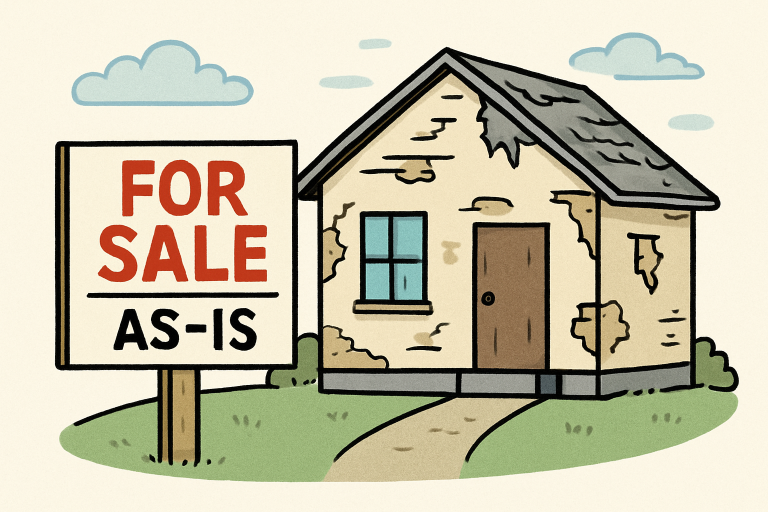Understanding ‘As-Is’ Home Sales
Selling your home ‘as-is’ means you put your property on the market exactly as it stands, without making repairs, upgrades, or renovations. This approach is often favored by sellers looking to save on costs and sell their homes quickly—particularly in highly competitive real estate markets where speed is crucial. For those seeking fast closing solutions, selling as-is can be a strategic decision that results in a swift and efficient transaction.
Homeowners frequently underestimate the time, expense, and stress tied to getting a house market-ready. By skipping renovations, you can focus on maximizing your net proceeds and moving forward with minimal disruption. It’s essential to weigh your need for convenience and speed against the potential for a slightly lower sale price.
Market Trends Favoring Move-In-Ready Homes
Recent real estate trends indicate a surge in demand for move-in-ready homes. Buyers are now willing to pay roughly 4% more for properties that need little to no updates. Conversely, homes that require extensive repairs, often called fixer-uppers, are selling for approximately 7% less than fully renovated properties, marking the most significant market discount seen in the past three years.
This change highlights a broader pattern: modern buyers increasingly prefer turnkey homes, as many don’t have the time, budget, or skills for major renovations. Homeowners looking to sell can consider a sell as-is approach, which allows them to market their property without investing in costly upgrades. Consequently, selling an as-is property successfully calls for a targeted and strategic approach.
Advantages of Selling ‘As-Is’
- Cost Savings: Forgoing renovations immediately eliminates the need for significant out-of-pocket expenses. You avoid the risk of spending money you may not recoup at closing. Selling your home “as-is” can help achieve this. According to Realtor, it means the property is sold in its current condition without requiring the seller to make repairs or upgrades.
- Time Efficiency: Without the delays associated with repairs, the sales timeline shortens considerably, making it possible to close quickly—sometimes within days or weeks.
- Reduced Stress: Skipping the home improvement process means less disruption to your daily life, fewer decisions to make, and minimal uncertainty about project outcomes.
Potential Drawbacks to Consider
- Lower Sale Price: Homes sold as-is often trade at a discount, reflecting the buyer’s anticipated repair costs and risk.
- Limited Buyer Pool: Many traditional buyers prefer homes in move-in condition, so the buyer pool for as-is properties typically consists of investors or those seeking renovation opportunities.
- Financing Challenges: Buyers interested in as-is homes may encounter difficulties securing traditional financing, especially if the property needs extensive repairs, which can slow negotiations or require more flexible terms.
Legal Considerations and Disclosures
Transparency is essential when selling a home as-is. Most states require sellers to disclose known defects and any material issues with the property. Openly sharing this information builds trust and protects you from potential legal complications down the road. According to the National Association of Realtors, sellers should provide full disclosure of any issues to avoid future disputes. Always consult with a real estate professional or attorney to ensure you’re compliant with disclosure laws in your area.
Strategies for a Successful ‘As-Is’ Sale
- Set a Competitive Price: Accurately assess your home’s current condition and research comparable sales in your neighborhood. Adjust your listing price to reflect any required repairs; this will help attract serious, qualified buyers from the start.
- Highlight Potential: Even an as-is property has unique strengths. Emphasize features like lot size, location, or architectural details, and offer inspiration about how the new owner could make the space their own.
- Target the Right Audience: Market your home to investors, contractors, and buyers specifically interested in fixer-uppers. These groups are more likely to recognize the value in buying as-is and often have the resources to handle renovations.
Conclusion
Selling a house as-is can be a rewarding and practical route for many homeowners, especially those eager for a streamlined, fast closing process. By staying transparent, pricing appropriately, and targeting the correct buyers, you can sidestep renovation headaches and move forward financially and emotionally prepared. Ultimately, understanding your options ensures you make the best decision for your circumstances and maximize the value of your home sale.
